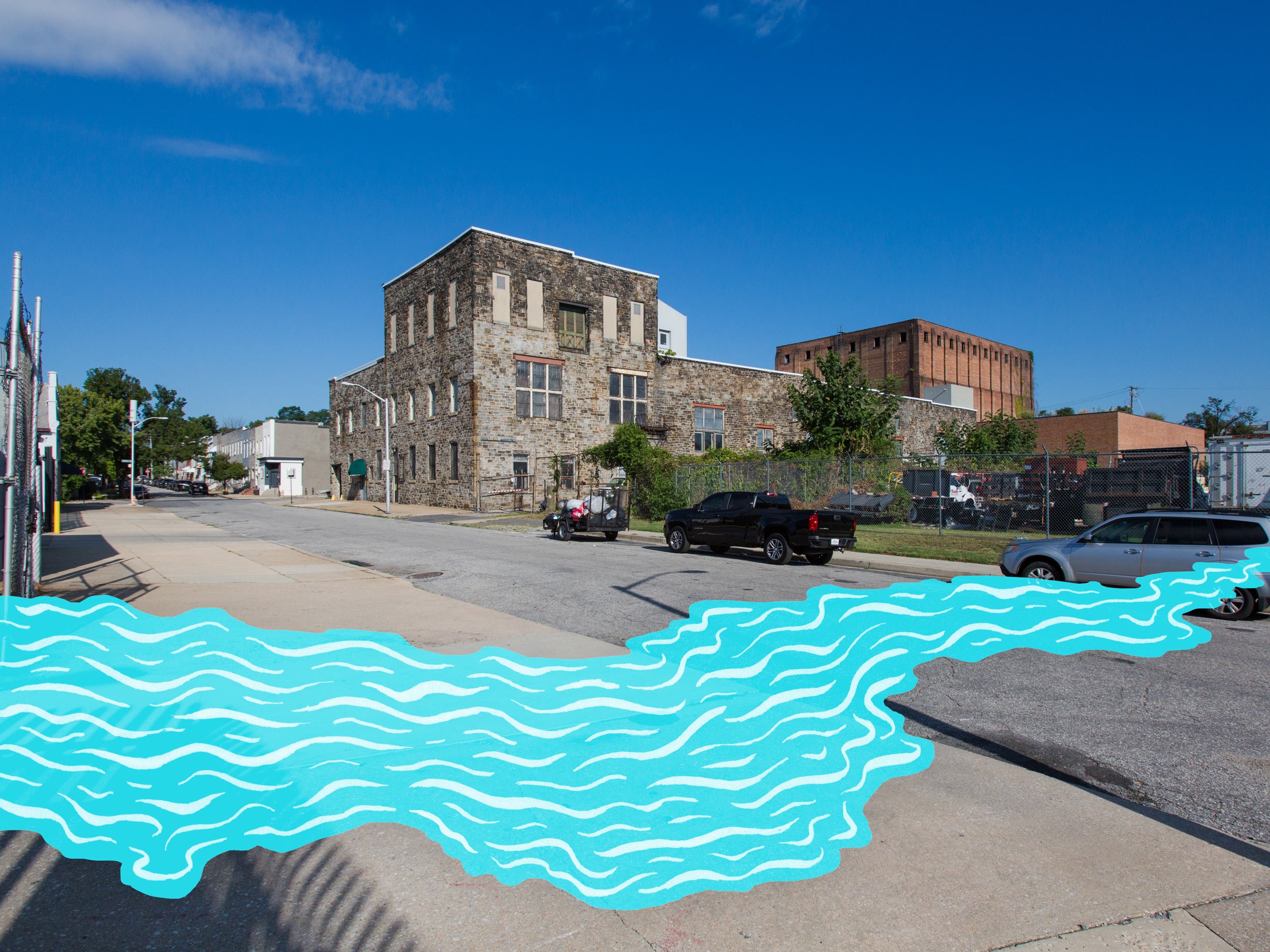
Site 11. 23rd Street
Ghost Rivers: Sumwalt Run
Three eras of ice.
Sumwalt Run cascaded down a steep, wooded ravine that once split the land under your feet. Just a few hundred yards upstream, this creek collected in a large pond that in the mid-1800s was a winter ice source for one of Baltimore’s first ice distributors. The early ice business was governed by nature’s variability. Mild winters meant less ice to cut from ponds and rivers. In the 19th century this was rarely a problem, as average winter temperatures lingered close to freezing. But in 1906, an exceptionally warm year wreaked havoc across the east coast ice industry.
The “ice famine of 1906” led to major shortages. Across the region, perishable foods went bad and morgues were unable to keep bodies cold. Annapolis banned the production of ice cream. These shortages sped the move towards artificial ice, a then-new process that used tubes filled with pressurized ammonia to rapidly cool tanks of water.
The large stone and brick buildings between 23rd and 24th Streets housed the American Ice Company’s first ice factory and storage warehouse in Baltimore. Built in 1905 and 1919, this plant originally drew its water from Sumwalt Run to produce huge blocks of ice, each weighing 310 pounds (10 pounds account for “shrinkage” as the ice melted), which could be loaded into large commercial ice boxes or cut down for household use.
By the 1940s electric refrigerators and freezers had become common household appliances, and by the 1980s most of Baltimore’s ice plants had closed or switched to making bagged ice. Today, raw materials mined in South America get shipped to Asia to become new refrigerators in our homes. Massive demand for electricity has reshaped our climate, our cities, and our power grid. The substation behind you hums above the former Sumwalt Run valley, while the frozen ponds and rivers of Baltimore have become memories of a bygone climate. We live increasingly unmoored from the rhythms of our landscape.
Cold, hard cash
Harvesting river ice on the Susquehanna near Havre de Grace, 1925. (Baltimore Sun Archives, Special Collections, University of Maryland, Baltimore County)
Men moving manufactured ice blocks inside an ice storage warehouse in 1943. (Photo by Jack Delano, courtesy Library of Congress)
American Ice newspaper ads, 1935 & 1936
A pile of discarded refrigerators. (Photo by the_justified_sinner via Flickr)
An Interchange of eras
The American Ice Plant (ca. 1940s) as seen from the corner of 23rd and Huntingdon.
Neighboring the American Ice factory, this Baltimore & Ohio warehouse (since demolished) was the terminus of several rail spurs. Coal from Appalachian mines and other materials were offloaded here. A block north along 24th street, you can still see concrete support pilings for the rail bridges, along with the remnants of these tracks snaking through a parking lot.
In the 1980s and 1990s, the empty factories of Baltimore began to sprout new life as the studios of artists and artisans. Woodworkers, metal fabricators, sculptors, and movie set designers moved into the old American Ice plant. During this time, tenants of the building produced everything from concert violins to museum doors to swords used in Pirates of the Caribbean. Plans are in the works for yet another transformation of this former ice plant into a hub for Black-owned film production companies and artists.









